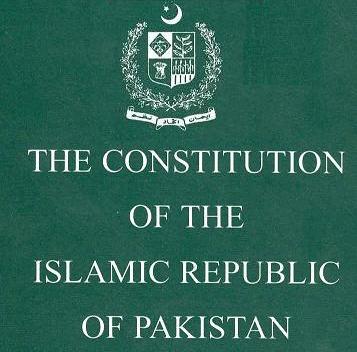Discuss the salient features of the 1973 Constitution of Pakistan. Salient Feature of the 1973 Constitution of Pakistan: The present Constitution is the third constitution of the country which was drafted and passed by the National Assembly of Pakistan on April 10, 1973. It was authenticated by the president on April 12, 1973 and enforced on August 14, 1973. Following are the main characteristics of this constitution. 1) A Written Constitution The Constitution of 1973 is written with a preamble, 280 Article, 6 Schedules and a few Amendments. Political Usage’s and Traditions are yet to emerge and develop side by side with the constitution of Pakistan. 2) Flexibility The Constitution is neither too rigid like the American Constitution nor too flexible like the British Constitution. It can he amended if 2/3 majority of the total strength of the National Assembly approves an amendment in it and when the same is […]
Types and Examples of Collective Behaviour
What is collective behaviour? Discuss different types and examples of collective behaviour. Also narrate theoretical approaches to the study of collective behaviour. Collective Behaviour: Collective behaviour has been generally applied to these events and refers to group behaviour which originates spontaneously, is entirely unorganized, fairly unpredictable and planless in course of development, and which depends on interstimulation among participants. Examples of collective behaviour include panics, revolutions, riots, lynching, manias, crazes, and fads. Traditional approaches to the study of collective behaviour have emphasized the importance of emotion, suggestibility and irrationality in the understanding of collective episodes. Types and Examples of Collective Behaviour The term collective behaviour has been applied to a broad range of group activities ranging from a rather spontaneous and short lived actions of a crowd to the more organized, structured and long-term experiences of a major social movement. – The Crowd We attend the theatre and game events […]
Mass Communication & Media of New Era
Media of Mass Communication in this era, Now let us turn to how various forms of media have been used for the purposes of mass communication. Mass media have traditionally been divided into two basic types: print and electronic (or broadcast). Print media (i.e., newspapers and magazines), of course, disseminate information through the production and distribution of paper copies. In contrast to electronic media, print media tend to be more permanent, or at least they were before the advent of widespread video and audio recording. Print media also require literacy of the audience. There are no bandwidth limits in print media, whereas there has traditionally been a finite number of possible radio frequencies and television channels (though today, due to technological advances, these are rapidly increasing in number). There is no inherent limit to the number of newspapers or magazines that may be published. In general, print media lend themselves […]
Attitude and Behaviour
Differentiate between attitude and behaviour. How do the characteristics of Source, message and audience affect the attitude making? Attitudes and Behaviour: Social scientists have debated the relationships between attitudes and behaviour –attitude as predictor of behaviour. Two studies of Richard Lapiere and Kutner et al indicated a lack of correspondence between actual behaviour and the behaviour th; respondents verbally indicated that they would take. A careful review of the research from 1930 to 1969 led to the conclusion that attitude accounts for about to percent I variability in behaviour. Warner and DeFleur have noted that the debate has resulted i three distinct views. The first is the postulate of consistency. It is based on the assumption that attitude can be used as reasonably valid guides for prediction of the behaviour. The second is the postulate of independent variation. It claims that there is no valid reason to assume that […]
Norms, Conformity & Social Learning Approach
Write a comprehensive note on the following: i) Norms ii) Conformity iii) Social Learning Approach i) Norms Wrightman has proposed that conscience operates, when each individual is working on his or her own, but when the person functions in “organizational mode” one’s individual conscience is no longer relevant. Such persons are operating in an agential state, or a condition in which the person sees himself or herself as an agent for carrying out another person’s wishes, in contrast to a state of autonomy, or acting on one’s own. According to social-psychological research, the presence of others, “whether in immediate sense or in the actor’s psychological definition of the situation” (Warner and DeFleur, 1969), exerts influence on the individual to act in a manner that is consistent with what those others are perceived to feel is appropriate and desirable conduct. According to this research it was noted that behaviour […]
Socialization & Theories of the Process of Socialization
Elaborate the process of Socialization. Also comment on major theories of the process of Socialization. Socialization: – Definition Socialization has Traditionally been the study of the process by which a human organism becomes a social being concerned with the rights and duties of self and others, with ethical and unethical behaviour, and so on. Socialization is the process of social interaction through which people acquire personality and learn the way of life of their society. Socialization is the essential link between the individual and society- a link so vital that neither individual nor society could survive without it. It enables the individual to learn the norms, values, language, skills, beliefs, and other patterns of thought and action that are essential for social living. And it enables the society to reproduce itself socially as well as biologically, thus ensuring its continuity from generation to generation. One of the most important outcomes […]
